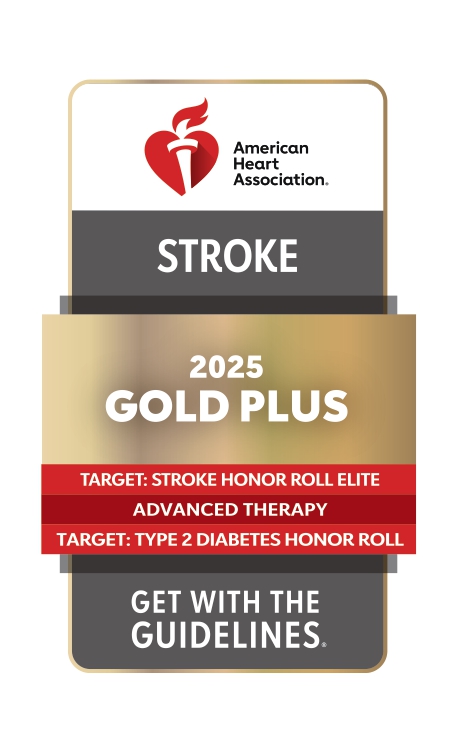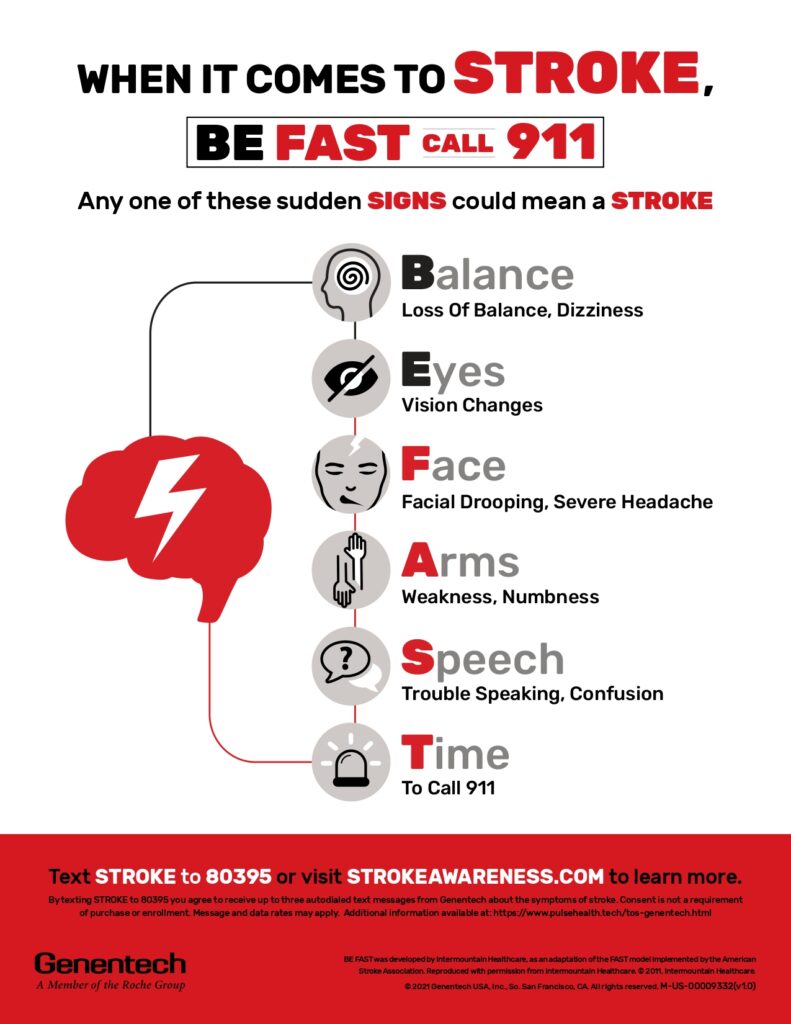Stroke Treatment
Stroke Treatment
Our multidisciplinary team of physicians and specialists includes emergency medicine physicians, neurologists, interventional neurologists, neurosurgeons, and nurses with stroke training. Upon arrival, the team quickly treats every patient with a comprehensive evaluation and collaborative management.
Stroke Treatment
5000 W Oakland Park Blvd
Lauderdale Lakes, FL 33313
954-735-6000
We are a Joint-Commission Thrombectomy-Capable Stroke Center in Broward County
What does it mean to be a Thrombectomy-Capable Stroke Center?
It means Florida Medical Center meets the rigorous standards for performing Endovascular Therapy (EVT), a specialized surgical procedure to remove a blood clot from the brain during an Ischemic Stroke. It means Florida Medical Center has the capacity to perform Endovascular Therapy (EVT) around the clock, seven days a week.
Every 40 seconds in the United States, someone has a stroke, making it the fifth leading cause of death among adults. Our center is equipped with some of the latest diagnostic and therapeutic advanced to quickly and accurately diagnose and treat stroke patients. Patients benefit from a range of comprehensive medical, surgical and minimally invasive treatment options, as well as access to clinical trials and research.
The American Heart Association/American Stroke Association (AHA/ASA) recognized the substantial and significant opportunity to assist hospitals and healthcare professionals with improving quality of care for stroke patients.
Target: Stroke was developed as an extension of Get With the Guidelines-Stroke in early 2010 to specifically focus nationwide efforts in reducing IV rtPA door-to-needle (DTN) times and further support the information translation and educational needs of healthcare providers caring for this patient population.

What is a Stroke?
A stroke is an emergency requiring immediate medical attention. Strokes happen when blood flow to the brain is interrupted, causing brain cells to begin dying from lack of oxygenated blood.
There are three kinds of stroke:
- Transient Ischemic Attack (TIA) – Often called a mini stroke, it’s often a warning stroke. A blood vessel that is blocked for a short period of time.
- Ischemic Stroke – The most common, is caused by a blood clot that blocks or plugs a blood vessel or artery in the brain. This clos causes a region of the brain to be deprived of oxygen and essential nutrients, leading to death of brain cells.
- Hemorrhagic Stroke – This type of stroke is caused by a blood vessel breaking and bleeding into the brain. Two types of weakened blood vessels that typically cause hemorrhagic stroke are aneurysms and arteriovenous malformations (AVMs).
- Brain Aneurysms – A brain aneurysm occurs when a blood vessel develops a weak area in the wall that allows the vessel to balloon out and fill with blood.
- Arteriovenous malformations (AVMs) – AVMs happen when a group of blood vessels in your body forms incorrectly. In these malformations, arteries and veins are unusually tangles.
Stroke Signs and Symptoms
- A sudden, severe headache
- Seizures
- Loss of sensation in part of the body
- Muscle Weakness
- Changes in vision
- Facial paralysis
- Drooping eyelids
- Problems with motion
- Confusion
- Dizziness
- Loss of consciousness
If you experience any of the stroke signs, or identify the signs in someone else, act B.E.F.A.S.T. and dial 911. Use the National Stroke Association’s B.E.F.A.S.T. test to help you remember the warning signs and symptoms of stroke:
- Balance – Watch for sudden loss of balance, headache or dizziness
- Eyes – Blurred vision. Sudden trouble seeing out of one or both eyes
- Face – Facial weakness – Ask the person to smile. Does one side of the face droop?
- Arms – Arm weakness – Ask the person to rise both arms. Does one arm drift downward?
- Speech – Speech problems – Ask the person to repeat a simple sentence. Are the words slurred? Can the patient repeat the sentence correctly?
- Time – If a person is having trouble with these basic commands, call 911 immediately.
Use B.E.F.A.S.T. to help you remember the signs.

Treating Stroke
Time is brain! At Florida Medical Center, we treat strokes as a medical emergency. Once a “code stroke” is called, our stroke team is activated and ready to provide our patients with rapid treatment. Most strokes are caused by blood clots blocking a blood vessel or artery in the brain (ischemia stroke). This type of stroke may be treated with a clot busting drug called IV thrombolytic. The drug has been found to be most effective when administered within three to four and half hours of last time of feeling normal. Time is extremely important when stopping a stroke in progress and minimizing the potential damage.
Endovascular Treatment
Our Interventional Neurology team provides a minimally invasive, endovascular approach to treating strokes, aneurysms, and neurovascular diseases of the brain and spine. Using catheters and radiology, our interventional neurologists perform minimally invasive procedures, such as stent placement and embolization.
These procedures are performed under the guidance of advanced-endovascular imaging monitors. Recent advances in imaging capabilities enable our highly-trained interventional neurologists to treat blocked arteries of the brain by removing, breaking-up, or even suctioning out the blood clot.
Our facility has invested millions of dollars in neurointerventional equipment and devices. With the assistance of this equipment, our physicians are dedicated to saving lives and allowing patients to return to a normal life, in some cases without any loss of function.
At Florida Medical Center, the following endovascular procedures are available:
- Cerebral Angiography (Angiogram): allows us to view how blood is flowing within the brain. Our interventional neurologist inserts a catheter into a large blood vessel and injects contrast dye. The contrast dye causes the blood vessels to appear on the X-ray image.
- Thrombectomy: an innovative surgical procedure used to remove blood clots from arteries and veins. Blood clots can disrupt the normal flow of blood to a part of the body, causing life-threatening conditions such as pulmonary embolism or an acute stroke. During the procedure, our interventional neurologist inserts a catheter into the patient’s blood vessel to remove the blockage and restore blood flow to the affected area.
- Carotid Artery Angioplasty/Stenting: used to treat carotid artery stenosis, the narrowing in one or both of the carotid arteries caused by the buildup of plaque on the inside of the artery. During this procedure, our interventional neurologist inserts a catheter into a groin or wrist artery and guides the catheter to the affected carotid artery in your neck. A small balloon at the tip of the catheter is then inflated to clear the passageway. In some cases, a stent (tiny mesh tube) may be placed in the affected area to keep the artery open.
- Endovascular Treatment for Brain Aneurysms and AVM’s: Aneurysms occur when there is a bulging area in an artery caused by a weakness in the artery’s wall. Brain aneurysms, also called cerebral aneurysms, affect the artery that supplies blood to the brain. Arteriovenous malformations (AVMs) are abnormal tangles of arteries and veins within the vascular system. Endovascular procedures involve the insertion of a catheter through the groin or wrist to treat these conditions. Our interventional neurologist may use different techniques to treat your aneurysm or AVM depending on your unique situation.
- Intracranial Stenting: Intracranial vessel stenting, or simply intracranial stenting, is a minimally invasive procedure to treat severe cerebral artery stenosis. Cerebral artery stenosis is a narrowing of the arteries that supply blood to the brain. Intracranial stenting involves placing a wire mesh tube (stent) in a narrowed artery. The stent expands to open the artery. It stays in place to prevent more narrowing.
- Middle Meningeal Artery (MMA) Embolization: Procedure used to treat chronic subdural hematomas, which are collections of blood between the brain and the brain’s protective layer. The procedure involves inserting a catheter through a small incision and guiding it to the middle meningeal artery where medication is injected to block blood flow. This method encourages the body to reabsorb the blood over time effectively reducing the size of the hematoma without the need for surgery.
- Tumor Embolization: Procedure that blocks the blood supply to a tumor to reduce bleeding or prevent further growth of the tumor. It involves using particles, such as tiny gelatin sponges or beads, to close off blood vessels that feed the tumor.
Our Neuroscience Team
Many professionals and programs come together under the Neuroscience Center to provide the highest quality of neurological care possible. This includes the program’s highly trained and skilled nurses. Nurses that specialize in neuroscience nursing are trained in the diagnosis and treatment of actual or potential patient and family responses to nervous system function and dysfunction across the healthcare continuum.
Florida Medical Center’s neuroscience nurses are proficient in caring for patients with neurological disorders. Patients who experience a severe neurological or neurosurgical illness receive around-the-clock monitoring and care by Florida Medical Center’s multidisciplinary team has specialized training in acute and ongoing management of stroke patients and caregiver needs.
The team is comprised of:
- Interventional Neurologists
- Clinical Neurologists
- Neurosurgeons
- Advanced Registered Nurse Practitioners
- Registered Nurses
- Emergency Room Physicians
- Radiologists
- Intensivists
- Pharmacists
- Physical, Occupational and Speech Therapists
- Respiratory Therapists
